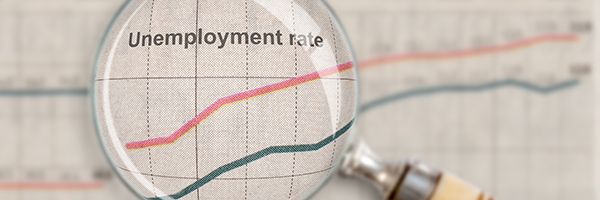Private payrolls rose by just 89,000 jobs in September, according to figures published today by the ADP Research Institute. That’s the fewest jobs added in a month since the start of 2021. Private payrolls climbed 180,000 in August. The results trailed all estimates in a Bloomberg survey of economists.
The report is more evidence of a further slowing in the labor market. “We are seeing a steepening decline in jobs this month,” Nela Richardson, ADP’s chief economist, said in a statement. “Additionally, we are seeing a steady decline in wages in the past 12 months.”
Both trends would be good news for the Federal Reserve in its fight to lower inflation. And would be positives for a financial market which has seen bond yields rise and stock prices stagnate recently on fears that inflation might be staging a comeback.
Good news–if, that is, the ADP numbers can be believed. Today the stock and bond markets are behaving like they want to believe–but are waiting for Friday’s official report on jobs before popping the bubbly.
As of the New York close, the Standard & Poor’s 500 was up 0.81% and the Dow Jones Industrial Average had gained 0.31%. The NASDAQ Composite was up 1.35% and the Russell 2000, which has behaved recently as if it is worried about an economic slowdown, had added just 0.11%.
The yield on the 10-year Treasury is down 6 basis points to 4.73%. That’s a very modest drop given the yield had climbed by 24 basis points in the past two days as bond prices plunged.
The hesitancy about going all-in on the ADP report is that it often doesn’t correspond very closely with the Bureau of Labor Statics Employment Situation report. (That September data from that report is due on Friday, October 6.) The trend is often similar in the two reports but the dimension of the move can be wildly discordant.
Which is very important at the moment because while it looks to most economists that the rate of job growth is slowing, what’s crucial right now is the speed at which the slowing is occurring. That the second order trend is what the Fed is watching to see when/if it needs to raise interest rates again. And when/if it should begin to cut rates in 2024.
The government’s jobs report on Friday is expected to show a 155,000 increase in September payrolls. That would be a slight decrease from the 187,000 jobs added in August. Economists expect the unemployment rate to dip back to 3.7% after ticking up to 3.8% in August. (Why is that discrepancy possible? Because the numbers on jobs added and the on the unemployment rate come from two different surveys.)


